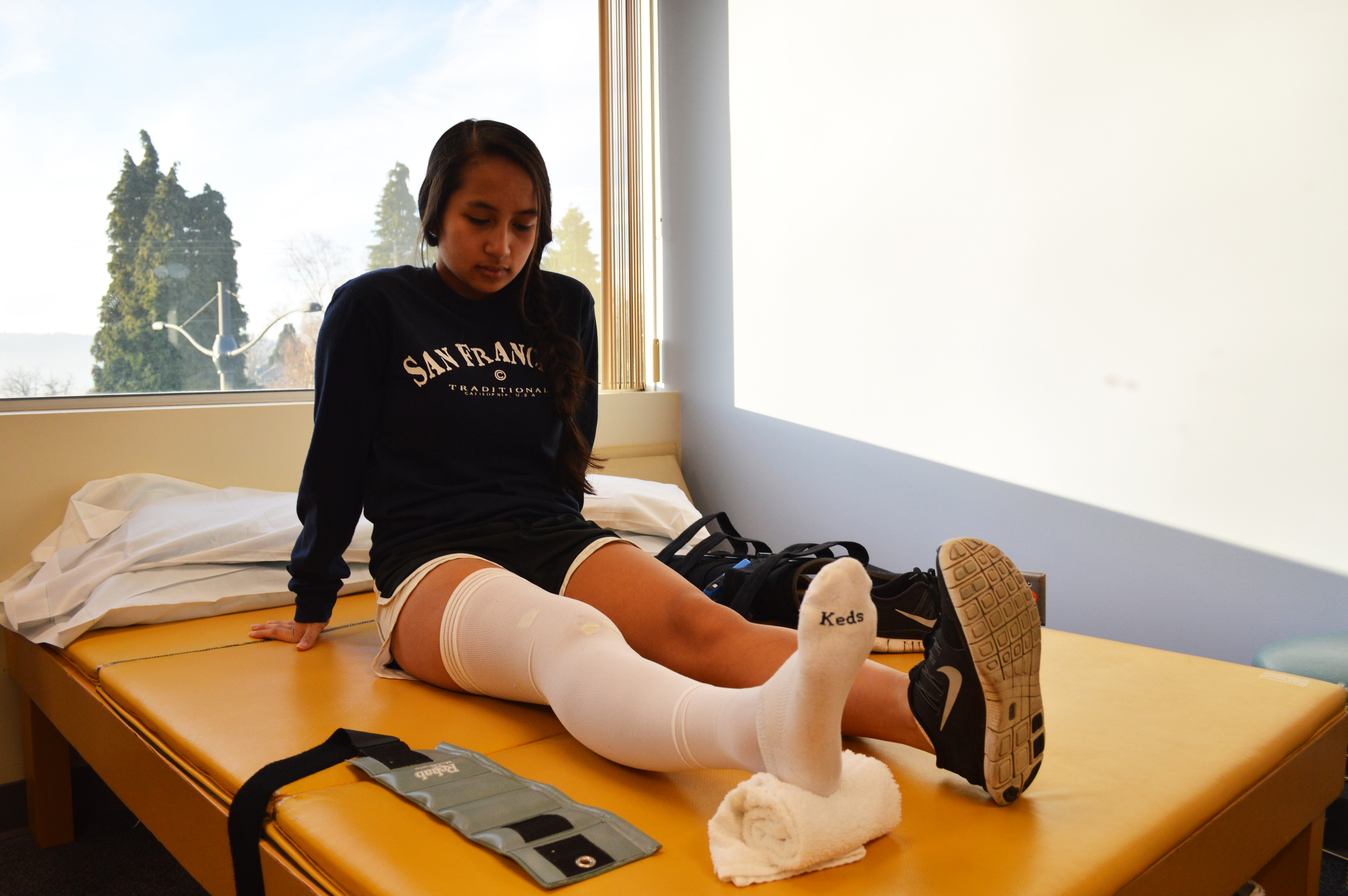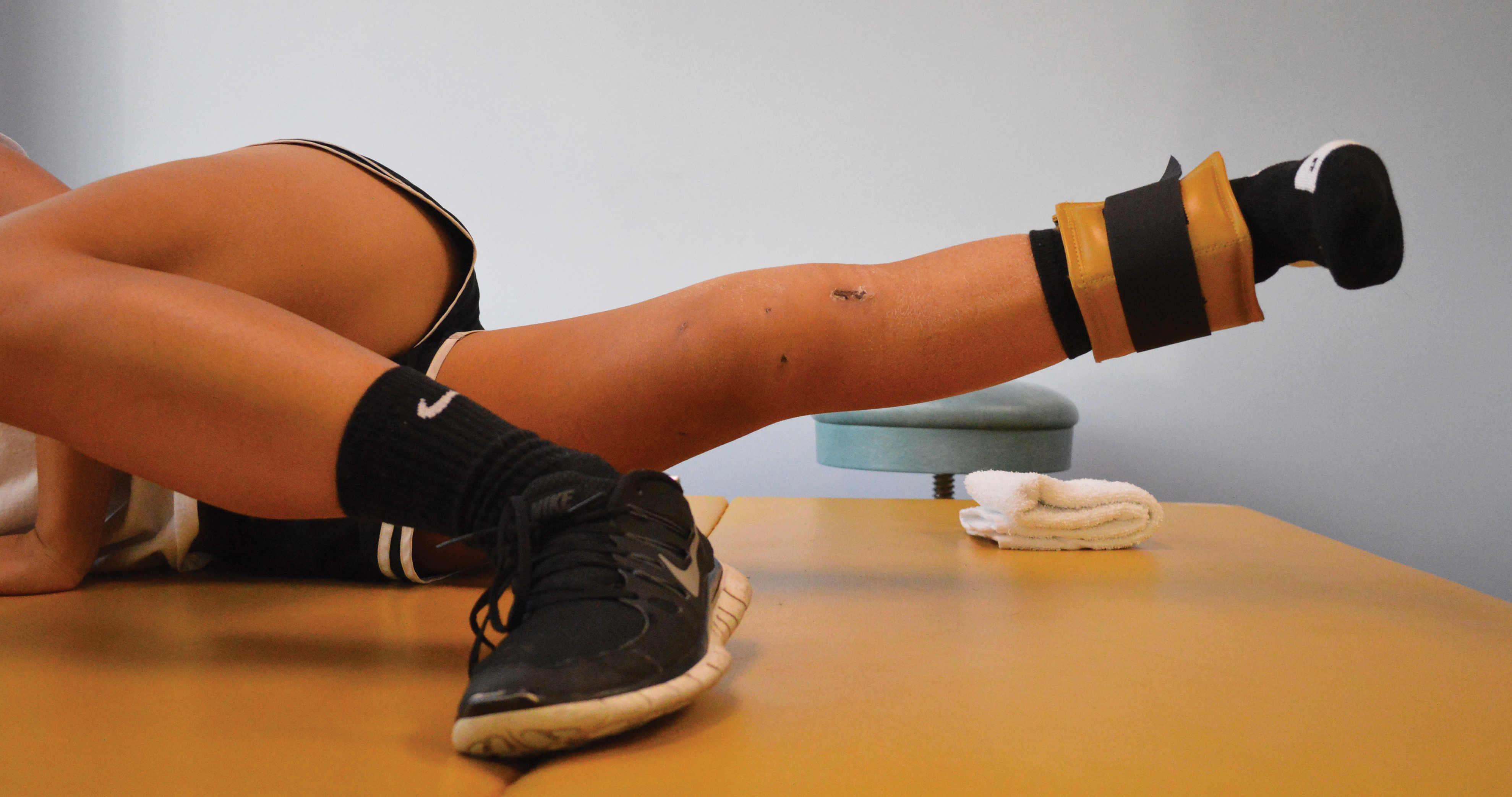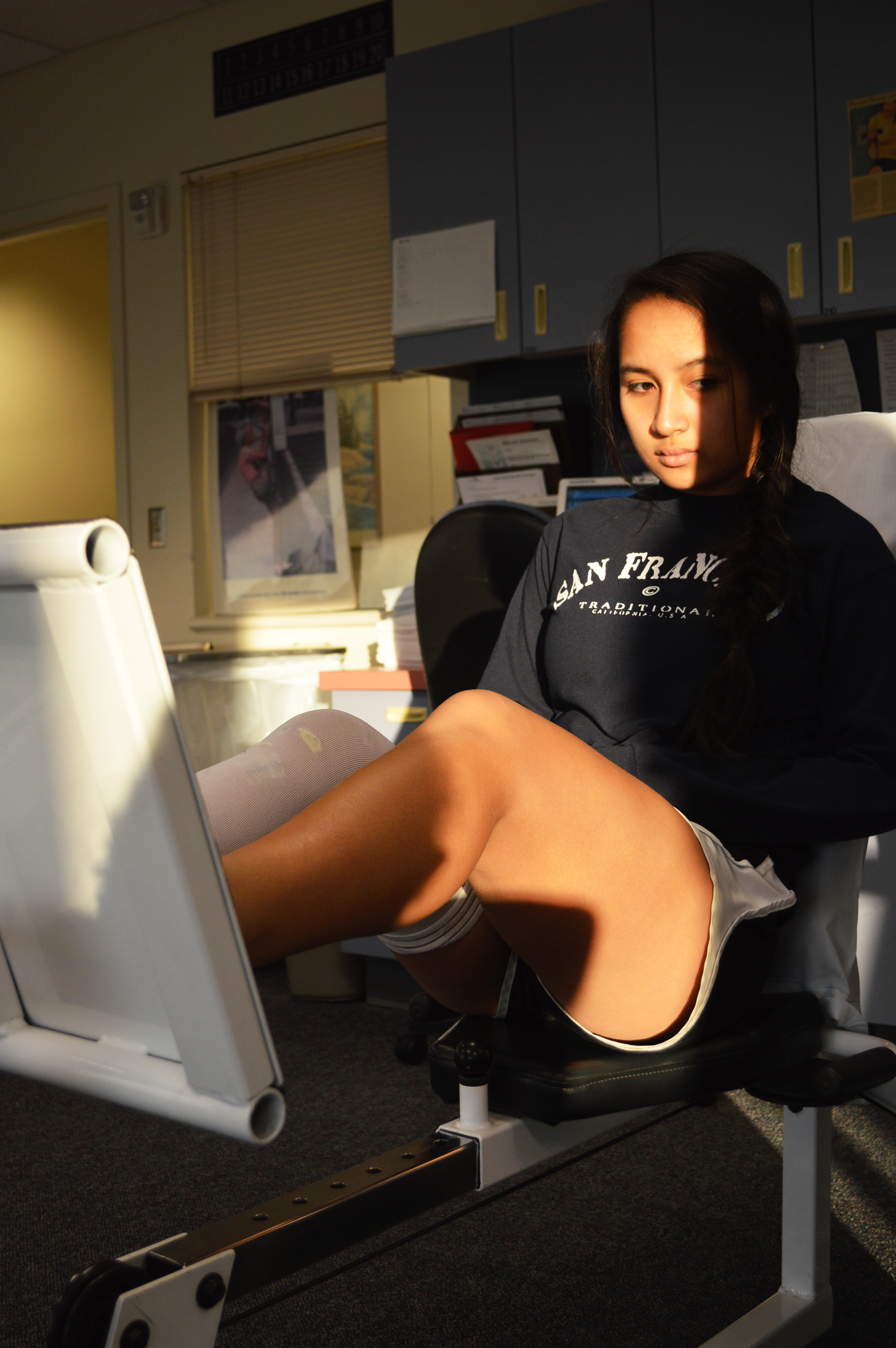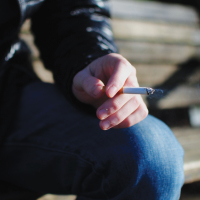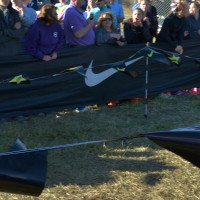Nearly five months ago, sophomore Caley Carlson was down on the turf field at Clackamas High School, her knee in excruciating pain.
“It popped,” she remembers saying. “I heard it pop twice.”
Carlson, 16, had just torn the anterior cruciate ligament in her right knee. Known as the ACL, it’s one of the four main ligaments in the knee that’s crucial for stabilizing while pivoting or turning.
Five weeks earlier, she was preparing for Grant’s fall soccer season and trying out for her club team, Portland City United. At the end of the first day of conditioning camp, Carlson says she was hanging in there. Her summer training had paid off, but she still had another tryout session that night.
Carlson’s age group didn’t have enough girls to split into teams and scrimmage, so they played against an older girls team. During the scrimmage, Carlson was pushed and fell to the ground. She landed on her left ankle and it rolled. “It was a bad strain, but it wasn’t a fracture,” says Carlson.
She rested her ankle and sat out the rest of conditioning camp in a brace and crutches. After a week of tryouts for the high school team, Carlson made the junior varsity soccer team even though she couldn’t play.
Grant’s JV girls played Oregon Episcopal School in their first game of the season, but Carlson still wasn’t ready to return yet. The following week, she began practicing full time and received a few minutes off the bench in games against Silverton and Central Catholic high schools.
On Sept. 15, Grant was playing against Clackamas. Hoping her injury was behind her, she subbed into the game with 15 minutes remaining. “I was excited to be back,” she recalls.
She went into the game at full throttle, making a few tackles that she readily admits could’ve been fouls against her. Then a girl from Clackamas ran into her and she fell to the ground. She heard the pops in her knee and knew something was wrong.
“She’s such a fire and she just loves to play soccer so much,” says Abby Torgeson, one of Carlson’s teammates. “It was heartbreaking to see her get injured again.”
Ken Takenaka, an athletic trainer at the Orthopedic and Fracture Clinic, says the most common age group for ACL injuries is between 30 and 40. But given the fact that high school students are more active and play sports almost every day compared to once a week for adults, the injury is still very prevalent. “Girls are definitely more prone to getting ACL injuries,” says Takenaka. “It’s probably one of the injuries that has the longest recovery time in that population of younger athletes.”
Carlson was adopted from Vietnam in July 1999, at ten months old. Her parents, Charlie and Rowan Carlson, and her older brother, Max, welcomed the girl into their home in Northeast Portland. Growing up five and a half years younger than her brother, Carlson went to many of his soccer games. Soccer began to play a huge role in her life.
In kindergarten, she started playing for the Hollywood Soccer Club while attending Hollyrood Elementary School. As she got older, she graduated from three versus three and pop up goals to standard-size fields and goals and became increasingly more involved in soccer.
When she started attending Beverly Cleary-Fernwood, most of the games were played on rough grass fields with bumps and potholes. Carlson was one of the unlucky players who consistently rolled their ankles.
In fifth grade, she tried out for one of Northeast United’s club teams and made the top squad for her age group. The club presented her with a bigger time commitment, harder competition and higher expectations.
In her last spring season with the club in 2012, Carlson had problems with her left knee’s iliotibial band – a ligament that helps stabilize the knee joint. It was too tight, forcing her kneecap out of place. She was out for roughly four months on and off, occasionally training but never at her full capacity.
After switching to PCU, Carlson was still battling injuries. The problems with her iliotibial band had resulted in aches and pains in her knee and hip.
Besides going to school everyday and soccer practices up to three times a week, Carlson was also assistant coaching for younger boys and girls. “It’s not a secret that she’s a little bit injury prone,” says her father, Charlie Carlson. “She’s been fighting injuries for a long time and to her credit she just grits her teeth and keeps at it and keeps coming back.”
The past four years, Carlson has been from one injury to the next, hoping to recover to full strength and ability.
Last May, Carlson was completely recovered from the past four years of injuries. Her summer training and tournaments with PCU had prepared her for the high school season. During the final 15 minutes of the Clackamas game, the trainer who was on campus tended to Carlson. She put a brace on Carlson’s right knee and made sure it was stable.
A trip to the emergency room that night didn’t help with a diagnosis, but she got medication to ease the pain. A few days later, an MRI confirmed the ACL was torn, but the doctors didn’t know to what extent. “They said there was a possibility that it could heal or that it was stable enough,” says Carlson.
With the amount of pain and stress the injury causes, it can be easy to get overwhelmed with everything.
“If she’s ever worried about it or needs someone to complain to about how she can’t play soccer and how she can’t do stuff, I’ve kind of been an outlet to be able to talk about it rather than just keeping in,” says Grant sophomore Dylan Helkey, one of Carlson’s close friends.
Following the initial tear of her ACL, Carlson underwent physical therapy twice a week for more than two months, first to reduce swelling, and then to build and strengthen muscle. Although her attendance was not marked, Carlson found her grades starting to slip. She says it was hard to stay focused and put effort into school because of the amount of pain she was in and the time her knee required in order to heal.
“That was really grating on her, during rehab, just not knowing when she would be ready for surgery or what was going to happen, just being in limbo, and she didn’t like that,” says Charlie Carlson. “She wants certainty.”
On Christmas Eve, she underwent surgery. Doctors removed a piece of her hamstring in her right leg and reconstructed her ACL.
Carlson says the first day back from the hospital was the worst experience of the injury. Not because of the stairs that lead to the main level of her house, but rather because of the anesthetic that made her extremely nauseous. Most of her winter break was spent sitting on her couch with an ice machine around her knee, reading book after book to pass the time.
Once winter break ended, she began to walk with the aid of crutches, hobbling through the Grant halls and down the stairs to class in the basement. Carlson says the first week was exhausting; having all eight classes on Mondays was difficult when her mobility was so restricted.
“She’ll complain about it but it’s just normal because she’s not whining about it,” Charlie Carlson says about the first day back. After a while, her pain level went down, making it easier to focus on her academics more and get her work done.
Now, Carlson is off crutches and her brace is unlocked, allowing her to move it more than 180 degrees. Every Wednesday, Carlson spends more than an hour and half in a window walled knee-gym at physical therapy, working on balancing, strengthening muscles, walking, squatting, flexibility and mostly range of motion. She hopes to be back in time for summer tournaments and Grant’s fall season for her junior year.
“It’s been really difficult because it involved a lot of pain,” she says. “But just the fact that I love soccer so much and want to get back to doing it through all the pain is motivation enough. It’s kind of difficult because I was really far away from people and I’m not really up to much activity, but hopefully it’ll all be worth it in the end.”◊
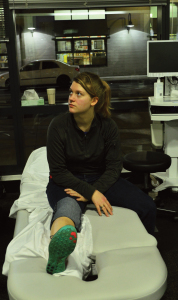
Makenzie Swan-Duffy, freshman
Injury: torn ACL
Surgery: Dec. 31, 2014
How it happened: “We were doing agility and power in PE class. I went to the hurdle station and there were three hurdles. The third hurdle was a little bit taller and I didn’t realize it when I jumped over it. My left leg got caught on the hurdle and I landed with all of my weight on my right foot. I heard a pop sound and I fell over, and I couldn’t get up.”
Worst memory: “I think it was probably during the laughing gas experience when I had fallen asleep or blacked out and when I woke up I thought that I was in surgery and that something had gone wrong with my anesthesia, but I was trying hard to breathe normally and not freak out and then the doctor told me he was just about to inject me with the anesthesia.”
Best memory: “After I had heard the pop, I was scooting myself around the gym trying to stay with my group and Ms. Engelstad asked if I wanted the nurse to come down with the wheelchair. I said no, because I heard my dad’s voice in my head and he’s always saying, ‘Rub some dirt on it,’ so I just got up and walked down to the nurse.”
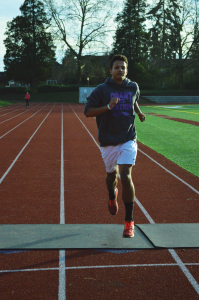
Dylan Palmer, sophomore
Injury: torn ACL
Surgery: Aug. 29, 2014
How it happened: “It was at soccer tryouts on the second day, so I usually play goalie. But this year I quit, so I was running towards the ball and then I went to change directions and when I went to plant, my knee popped and I collapsed and was in a ton of pain for about 20 seconds and then in no pain at all. I walked over to the bench and in my mind, I knew that I had torn it – because it had happened to my mom and brother – so I knew what that experience was like.”
Worst memory: “It was definitely a few days after the surgery after the anesthesia stopped working and it was just super painful and I couldn’t get up to go to the bathroom. It felt like someone was trying to rip my kneecap off when I would try to walk.”
Best memory: “Going and playing soccer for the first time was really, really, really great. I can run and shoot a soccer ball and pass and do stuff like that.”

Jayden Dirk, junior
Injury: torn ACL and medial meniscus
Surgery: Dec. 15, 2014
How it happened: “At the end of last September, I was playing ultimate Frisbee and I jumped up and landed on it wrong, and I heard a pop in my left knee. I was unable to put weight on it for about 30 minutes and after resting on it for a bit I thought it was just a bad sprain. I rested and didn’t do anything in it for a few weeks and it went alright until the end of November when I took a sharp turn while I was running and heard a pop again. And from then on, I was unable to put weight on it at all.”
Worst memory: “The toughest part was not being able to put any weight on it for a month after my surgery, so just dealing with the injury itself and not being able to get around and move to the best of my ability.”
Best memory: “It was the first real injury I’ve had, so it was just kind of dealing with adversity and learning a lot about how important my friends and family are to me.”


